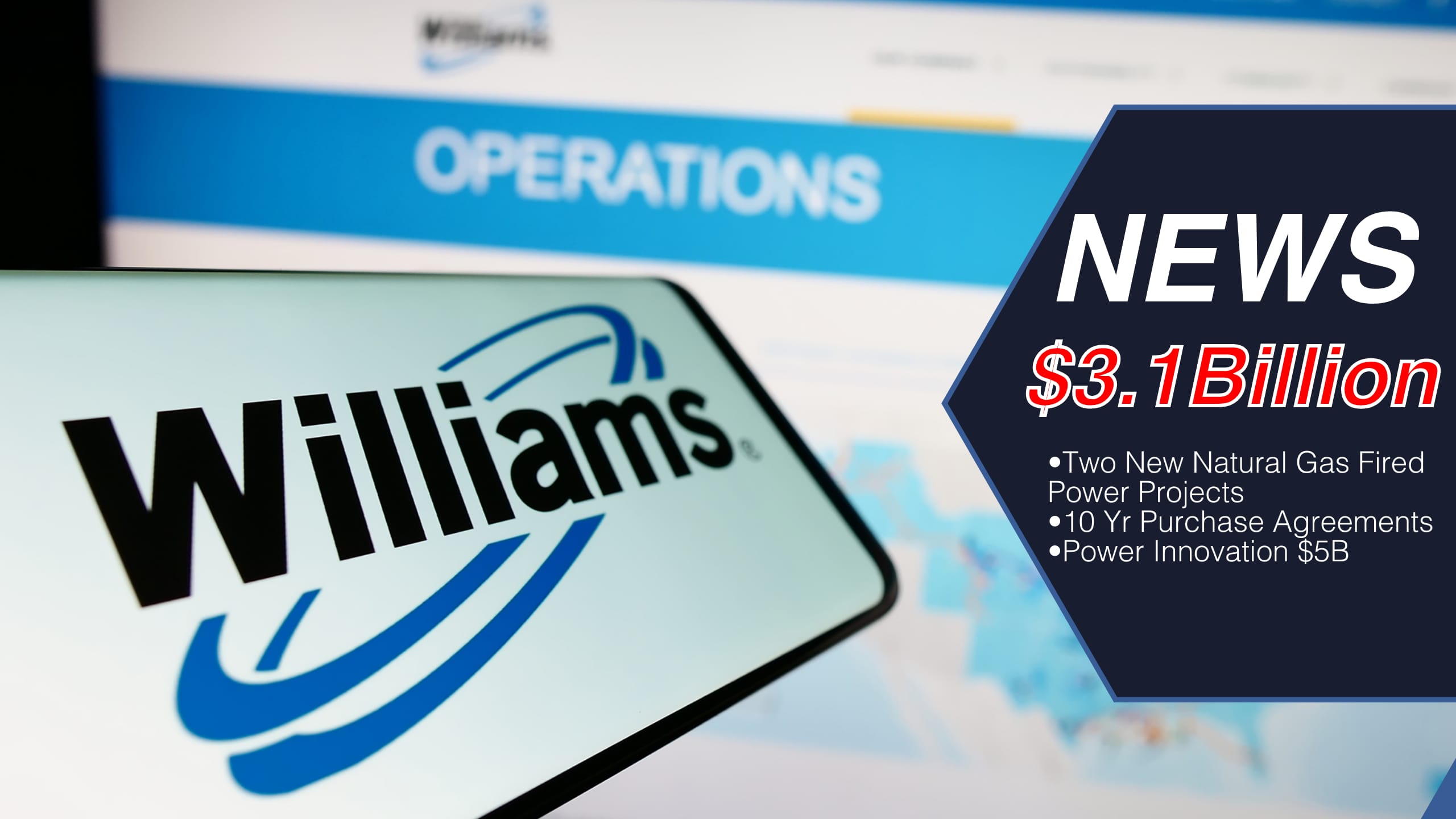This article is brought to you by: Pipe Exchange, leaders in Line Pipe Distribution
Williams Companies announced plans to invest $3.1 billion in two new natural gas-fired power projects, according to a Form 8-K filing with the U.S. Securities and Exchange Commission on Oct. 1, 2025. The move expands the company’s total “power innovation” portfolio to $5 billion and underscores its strategy to meet the rapidly growing electricity needs of AI data centers and industrial hubs. As part of the announcement, Williams also raised its 2025 capital spending guidance by $875 million, to a range between $3.45 billion and $3.75 billion.
The Tulsa-based midstream operator, which transports about a third of the U.S. natural gas supply, said the two projects are backed by 10-year, primarily fixed-price power purchase agreements with a financially strong customer. These facilities are expected to be completed in the first half of 2027, though Williams has not yet disclosed their locations. According to the SEC filing, the investments reflect growing demand for reliable, lower-emission power generation to support data-intensive operations, a trend highlighted by the U.S. Energy Information Administration, which forecasts record-high power consumption through 2026.
Williams President and CEO Chad Zamarin highlighted in a LinkedIn post that the company’s Power Innovation strategy connects Williams’ speed-to-market infrastructure capabilities with the surging energy needs of cloud computing, AI, and advanced manufacturing. Zamarin emphasized that NextGen Gas, emissions monitoring, and carbon capture and storage (CCUS) technologies are central to Williams’ approach to supplying cleaner, lower-emission natural gas power. The company’s New Energy Ventures division is also pursuing scalable solar and battery storage projects, further diversifying its portfolio to align with the Gulf Coast’s transition to lower-carbon energy systems.
The announcement comes amid forecasts from the U.S. Energy Information Administration and Bloomberg showing that U.S. electricity demand could rise 31% by 2030, with the Gulf Coast leading the growth due to its concentration of AI data centers, LNG export terminals, and industrial energy users. Williams joins Energy Transfer and Kinder Morgan in building large-scale gas-fired and pipeline projects to supply this demand. With over $14 billion in transmission and expansion opportunities under evaluation across its Transco, MountainWest, and Northwest Pipeline systems, Williams is positioning itself as a critical bridge between natural gas infrastructure and next-generation power reliability in the heart of America’s energy corridor.






